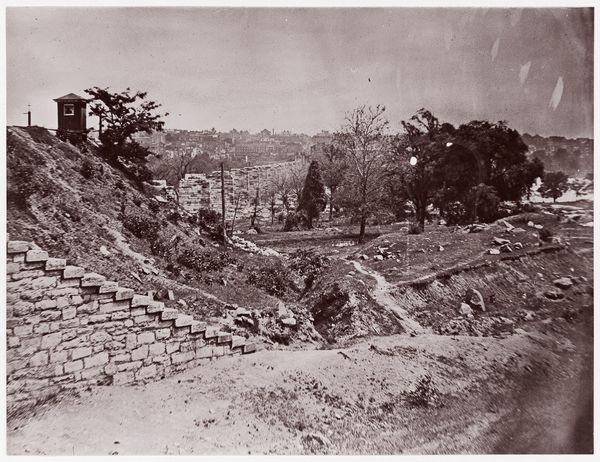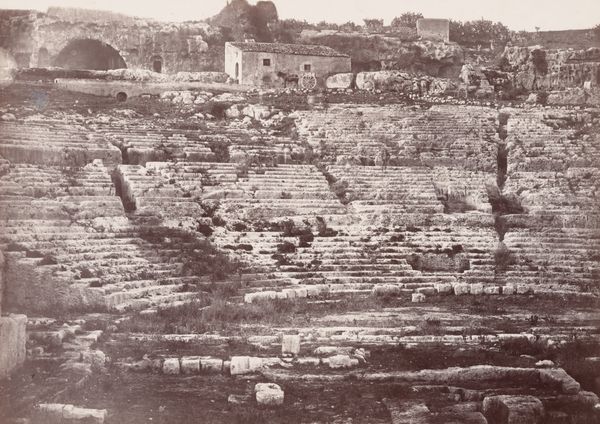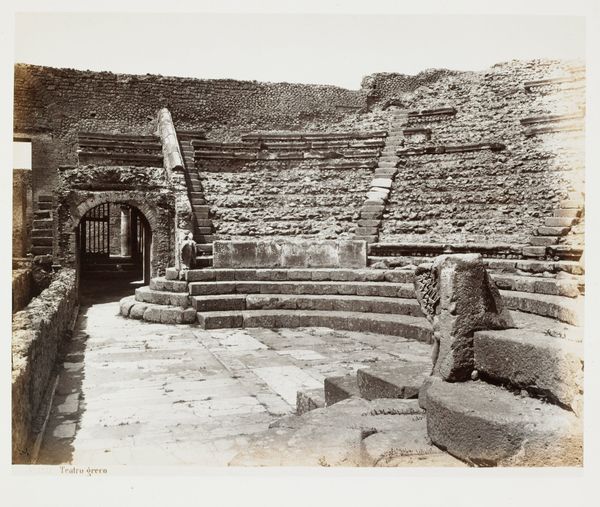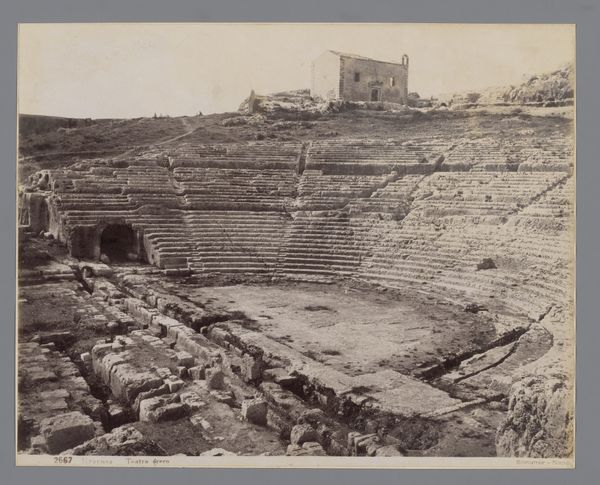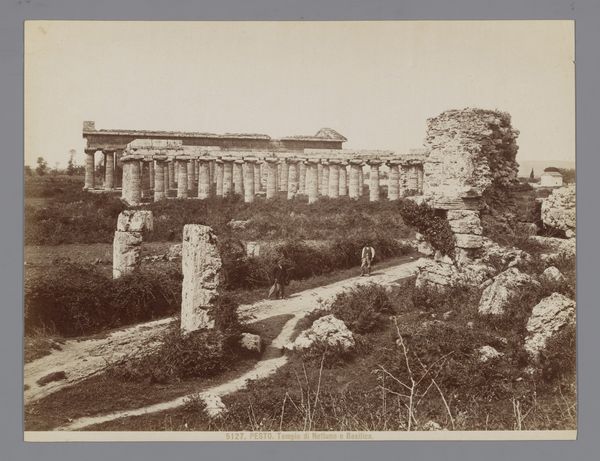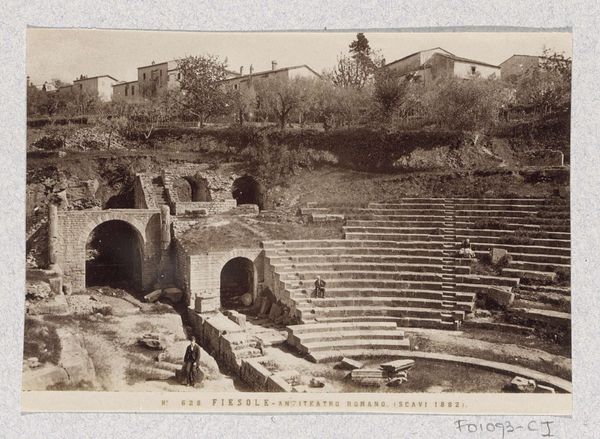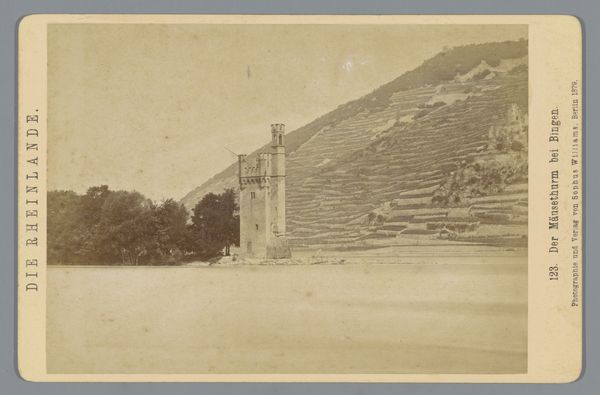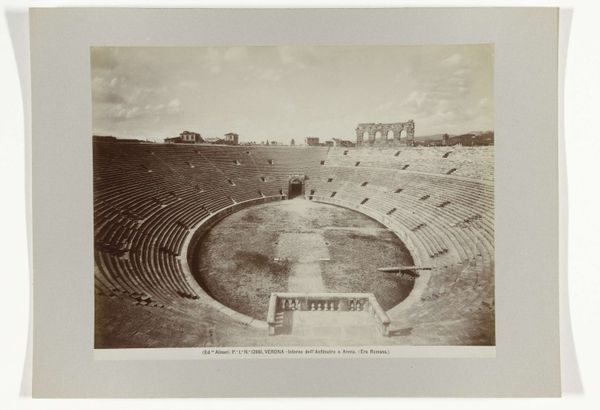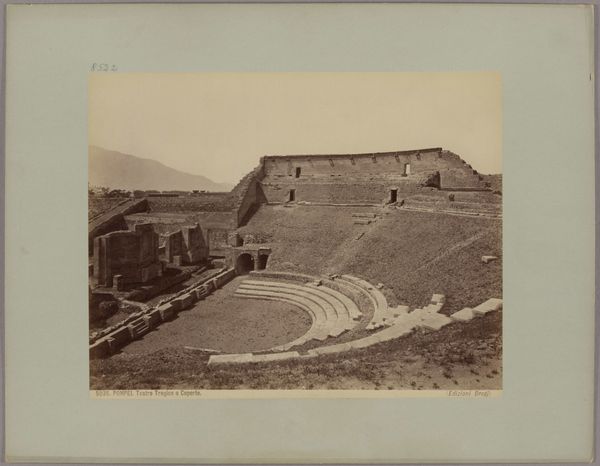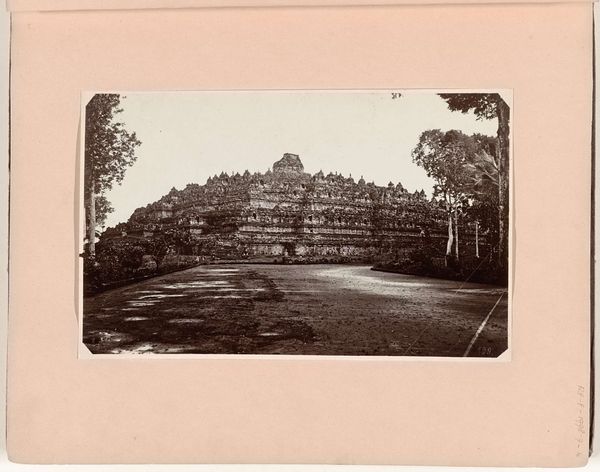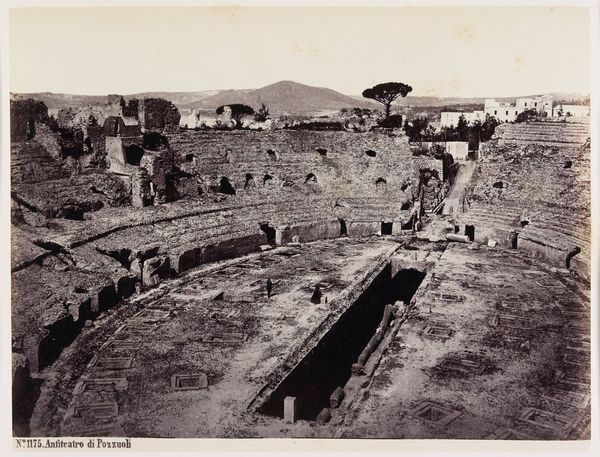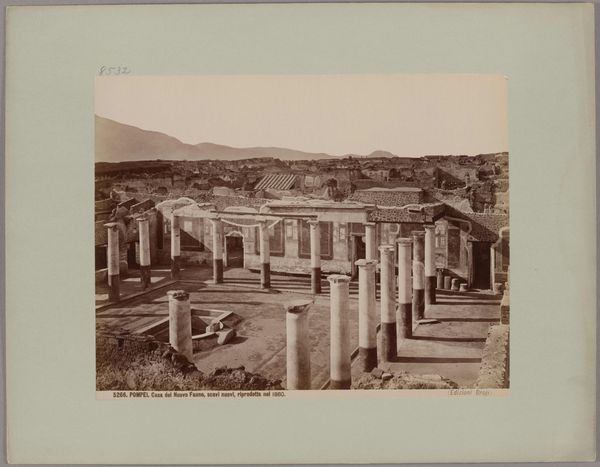
print, daguerreotype, photography, albumen-print
# print
#
landscape
#
daguerreotype
#
photography
#
geometric
#
ancient-mediterranean
#
cityscape
#
albumen-print
Dimensions: height 200 mm, width 259 mm
Copyright: Rijks Museum: Open Domain
Editor: Well, that's haunting. Just this echoing emptiness captured in a photo. Curator: It is evocative, isn’t it? This albumen print, likely dating between 1860 and 1900, shows the "Amfitheater van Tusculum nabij Frascati," or the Amphitheater of Tusculum near Frascati. The studio mark suggests it was created by the firm Anderson. Editor: Anderson… Interesting. Albumen… so this was quite early in photography's development as a commercial medium. But this isn't just documenting; there’s a deliberate artistic choice. Look how the light catches the crumbling tiers. What story does this choice reflect to your eye? Curator: For me, it speaks volumes about the romanticization of ruins, a kind of visual elegy for a lost grandeur. There’s this inherent tension, you know, between the allure of a distant past and the stark reality of decay and imperial hubris. The photographer isolates and romanticizes it all at once. Editor: True. Think about the audiences for these photographs at the time. Surely, a lot of upper-class folks on their grand tours wanting mementos... Images serving this insatiable hunger for verifiable experience. Do you think the composition heightens or subverts that expectation? Curator: Good question. I think it complicates it. The classical composition gives the ruins a renewed kind of aura. The photographer clearly wants us to dwell on the amphitheater’s form but can't help but hint about what led to that degradation: wars, neglect, changing cultures. So it both indulges the romantic view *and* silently questions it. It's interesting, the role that ruins continue to play in public memory. Editor: Precisely. These aren’t just stones; they’re loaded with political resonance, shaped by the changing winds of history. But to capture a moment—that takes imagination. And the choice to frame and present it says so much. Thanks for opening my eyes. Curator: Absolutely. History breathes differently when filtered through such a lens.
Comments
No comments
Be the first to comment and join the conversation on the ultimate creative platform.
